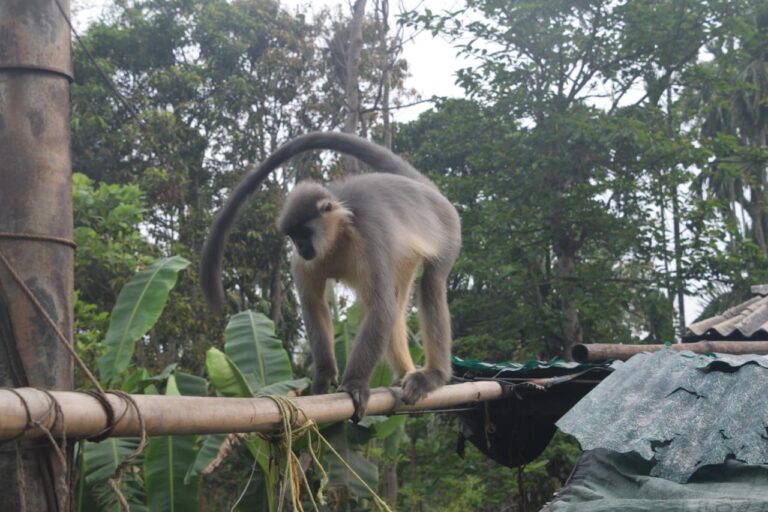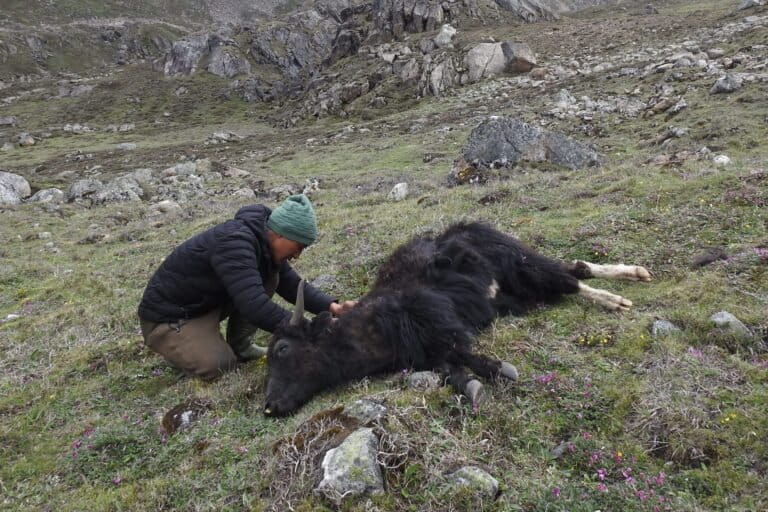- A new study on the venom development of two clinically important snakes finds Russell’s viper neonates produce venoms that are twice as potent towards mammals, compared to the ones produced by adults.
- The venom of cobras remained equally potent across their developmental stages due to the presence of three-finger toxins.
- Despite the study’s significance in understanding snake venoms, it may not have an immediate impact on the ongoing antivenom research, according to experts.
Who would have thought even shy, unassuming animals like snakes have layers of personality waiting to be peeled off? While trying to understand how the venoms of two clinically important species of snakes in India, Indian spectacled cobra and Russell’s viper, develop from birth to adulthood, a group of scientists have stumbled on a fascinating discovery — a baby Russell’s viper bite can hit one harder than that of its mamma.
While the venom of Indian spectacled cobra (Naja naja) remained largely the same across developmental stages, Russell’s viper (Daboia russelii) venom showed considerable variation. The venom of the neonates (less than a month old) were found to be far more potent towards mammals, compared to the venom of the juvenile or adult Russell’s vipers. The scientists, from the Evolutionary Venomics Lab at the Centre for Ecological Sciences, Indian Institute of Science (IISc), who conducted the study, attribute these differences to ecological and life-history factors influencing the venom composition of these snakes.
Over 200 individuals of both species were studied in captivity, with their venom collected from birth through adulthood. Various experiments were conducted to examine different aspects of the venom, including its composition, function, and potency, and to understand how these characteristics evolved over time in relation to changes in their diet and development.
Newborns ace adults
Scientist and one of the authors of the paper, Kartik Sunagar, explains that since venom is an adaptation trait, its development is influenced by various ecological factors, including the animal’s diet. In newborn Russell’s vipers, venom potency is closely linked to their diet at that stage, which typically includes small reptiles like lizards. “Lizards become a less significant prey item for adult Russell’s vipers, and as a result, their venom becomes more specialised for mammals,” he notes.

While venoms of young ones were potent against both mammals and reptiles, adult venoms were potent only against mammals. During the course of the study, the researchers noticed that while a very minute amount of adult Russell’s viper venom was enough to kill a mouse within minutes of injection, injecting 20 milligrams per kilogram of adult Russell’s viper venom did not kill a lizard, even 24 hours later.
In contrast, cobra venom did not show significant variation across developmental stages. This consistency is attributed to the presence of three-finger toxins, which target acetylcholine receptors in their prey and cause neurotoxicity. Acetylcholine receptors are crucial for skeletal muscle contraction, and these toxins bind to and block these receptors, resulting in muscular paralysis. The three-finger toxins are highly effective against all prey types that cobras consume, regardless of the snake’s developmental stage, explains Sunagar.
Antivenom research
Snake researcher and founder of The Liana Trust in Karnataka, Gerry Martin who was part of the study says that though this is not the first time that ontogenetic shifts or changes during development in snakes being studied, this finding goes on to demonstrate how little we know about an animal that’s familiar to us.
The study’s findings are particularly significant given India’s ongoing status as the country most severely affected by snakebite cases, a situation that has remained consistent since the 2020 estimates. Researchers say they believe that detailed information about snake venom ecology could enhance our understanding of these species and potentially aid in the development of more effective antivenoms, thus reducing the burden of snakebite incidents.
However, Sunagar points out that the new findings will not immediately impact current antivenom research. Without comprehensive epidemiological data on snake bites, incorporating venom from viper neonates into antivenom formulations might not be advisable at this stage. “We need to further examine how relevant the potency of neonate venom is to human envenomations,” Martin adds.
But how often do people get bitten by baby snakes? Dr. Jaideep C. Menon, professor of adult cardiology and public care at Amrita Hospital, Kochi, who heads the task force of the Indian Council for Medical Research (ICMR) on snake bite studies, informs Mongabay India that bites from younger snakes are often reported following floods.
Menon emphasises the need for more effective antivenoms, noting that India currently has only one antivenom for all four clinically important snake species. Since ecosystems influence the genetic makeup of snakes and their venom, which develops in response to their specific prey, a single antivenom may not be sufficiently effective across diverse geographies. While the current findings may not immediately alter existing treatment protocols, they hold promise for future developments, particularly if antibodies can be designed to neutralise venom fractions from young snakes, he says.
Banner image: An adult Russell’s viper. In a study on viperine snakes, Russell’s viper venom showed considerable potency changes through its developmental stages while cobra venom remained the same. Image by Supratim Deb via Wikimedia Commons (CC BY 4.0).














